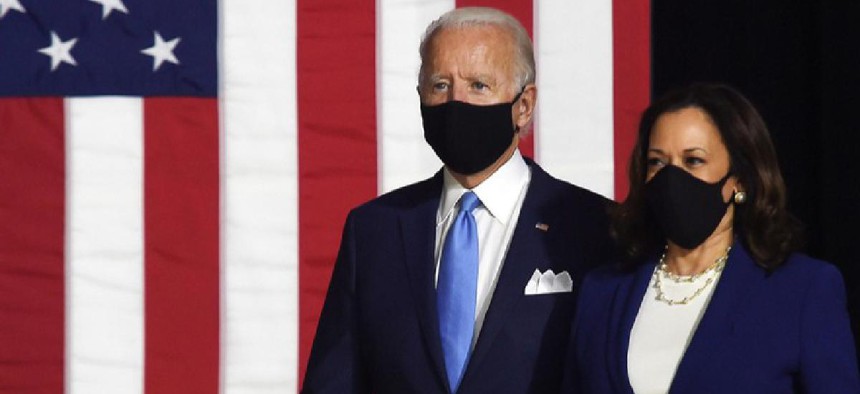White House releases 'vision' for management agenda

The coming president's management agenda will stress the federal workforce, customer service user experience and equity as well as a push to build capacity in financial management and improve acquisition.

The Biden-Harris Management Agenda Vision document offers a blueprint for what's coming in the PMA
The "Biden-Harris Management Agenda Vision," released by the White House on Wednesday, sketches set of workforce, IT and acquisition priorities that the administration says will help the government deliver on the Biden administration agenda and restore trust in government.
"One of the central questions of our time is whether American democracy can still deliver – can we come together to meet the most pressing needs of our people," he wrote. "The president's management agenda is a blueprint for our government to deliver for Americans the government they deserve as we continue to build back better."
The new vision focuses on three priority areas – workforce; services delivery and customer experience; and the business of the federal government.
The White House says that more pieces of the PMA will be released in coming months and weeks.
Efforts will be "multi-stage, multi-year, administration-wide," said Jason Miller, deputy director for management at the Office of Management and Budget during a briefing with reporters.
On the workforce front, the administration says that it wants to fuel a "talent surge" in government of qualified, diverse workers. That'll include improving competitive hiring, adapting hiring processes and "transforming" the vetting process to support better mobility while still identifying risk.
The Biden administration also said that it wants to build up a personnel system to "sustain the federal government as a model employer," and pointed to empowering federal workers and ensuring that they can join a union.
The vision also says that the White House intends to continue to use flexibilities like telework and alternative work schedules first brought into government on a wide scale because of the pandemic.
On the tech side, the administration proposes designing and building government service delivery mechanisms that cut across agencies for "key life events." The document references navigating disaster assistance or losing a job as example of events where "government customers spend too much time filling out duplicative paperwork or navigating multiple interactions spanning multiple agencies just to receive government services for which they are eligible."
Agencies will identify barriers to service to inform these efforts to "making sure that we are acting as one federal enterprise from the customer's viewpoint," said Miller.
The IT section of the vision also includes improving service design, digital products and customer experience on "high-impact" service providers in the federal government.
"We intend to leverage the scale of common capabilities while designing safe and secure products that better meet what the customer needs," the document says, listing a unified login credential and customer feedback tools as potential examples.
Getting the funding for these efforts will include the normal budget and appropriations process as well as existing resources like the U.S. Digital Service and Technology Modernization Fund, Miller said.
The final set of priorities in the new vision focus on the "business of government," with lines of effort covering improving the acquisition system to support domestic manufacturing and to address climate change.
NEXT STORY: Recruitment is top of mind for OPM's Kiran Ahuja






